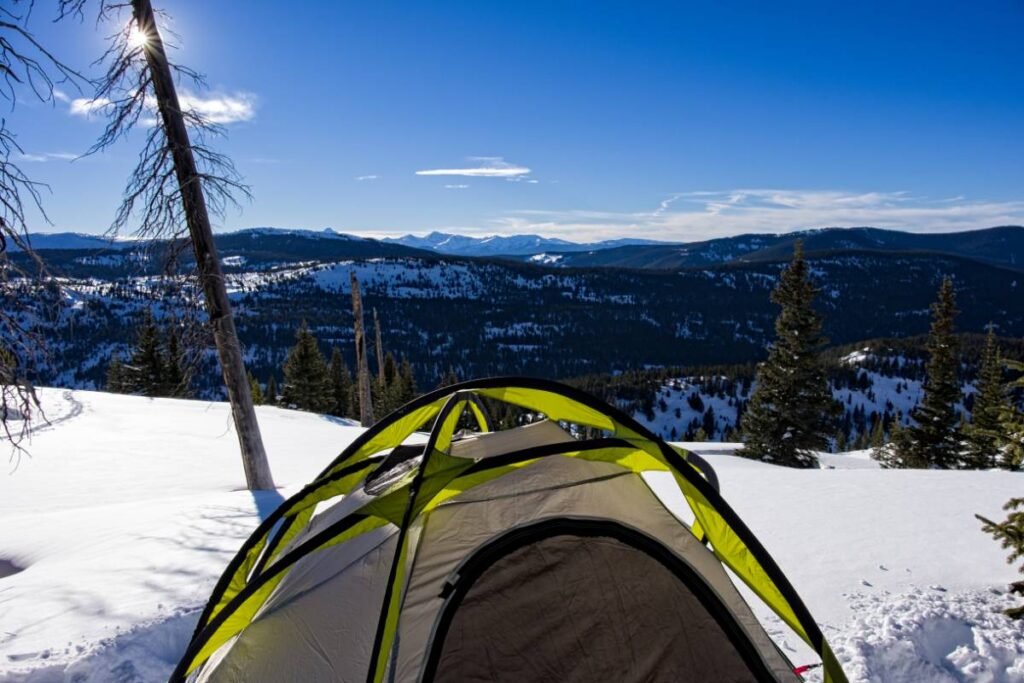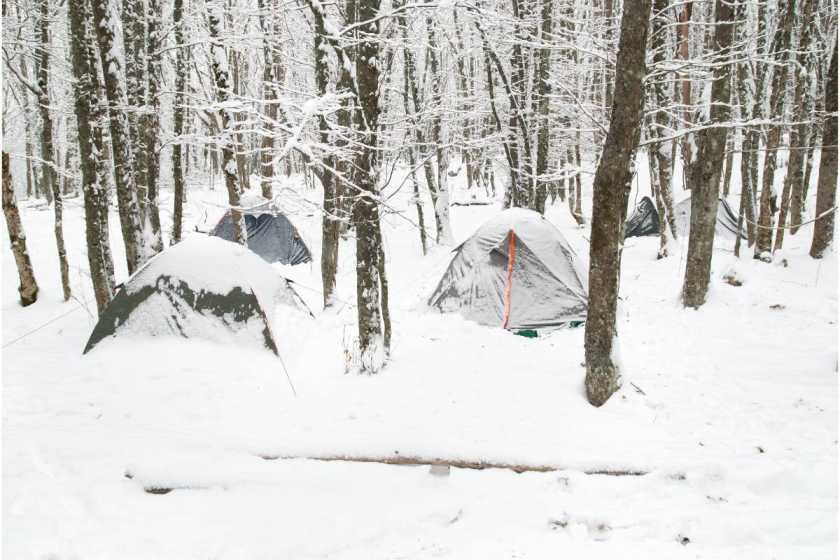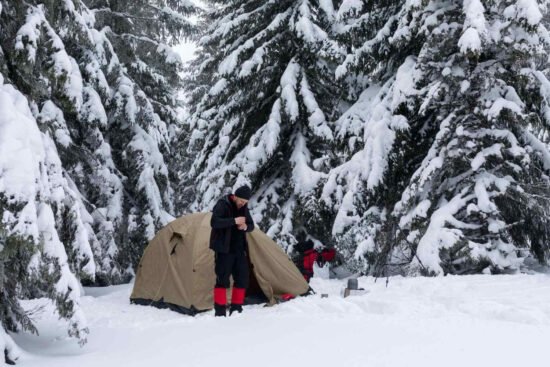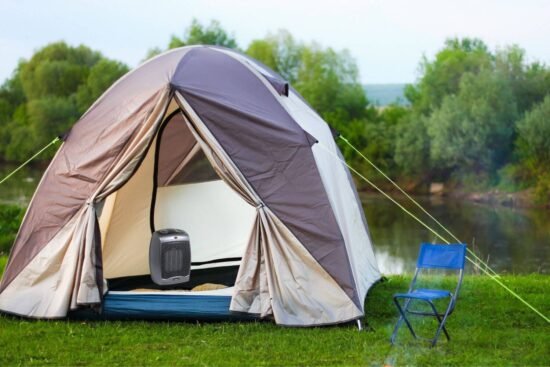Winter camping offers a unique and thrilling experience, but it also comes with its own set of challenges. Ensuring you stay warm and safe during your adventures is paramount, and that’s where Best Hot Tents for Winter Camping hot tents come into play. In this comprehensive guide, we’ll explore the best hot tents for winter camping, providing you with all the information you need to choose the perfect shelter for your next cold-weather expedition.
What is a Hot Tent?
A hot tent is a specially designed shelter that allows you to use a wood stove or other heating device inside. These tents are typically made from durable and fire-resistant materials, ensuring safety while providing warmth. Unlike regular tents, hot tents have stove jacks—reinforced openings designed for stove pipes—allowing campers to safely run a chimney through the tent wall.

Benefits of Using a Hot Tent in Winter
Hot tents offer numerous benefits for winter campers. Firstly, they provide a warm and cozy environment, allowing you to escape the biting cold. Secondly, the heat from the stove can be used for cooking, melting snow for water, and drying wet gear. Lastly, hot tents extend your camping season, giving you the freedom to explore the great outdoors even in the harshest winter conditions.
Why Choose a Hot Tent for Winter Camping?
Safety and Warmth
When you’re out in the wilderness during winter, staying warm is crucial. Hypothermia is a real threat, and a hot tent can make all the difference. The consistent heat source ensures you remain comfortable and safe throughout the night.
Comfort and Convenience
Hot tents offer unparalleled comfort compared to traditional winter camping shelters. The warmth allows you to enjoy a good night’s sleep, while the spacious interior provides ample room for your gear and activities.
Key Features to Look for in a Hot Tent
When choosing a hot tent, consider the following features to ensure it meets your needs:
Insulation
Good insulation is essential for retaining heat and keeping the cold out. Look for tents with high-quality insulating materials and construction.
Ventilation
Proper ventilation is crucial to prevent condensation and ensure a steady supply of fresh air. Look for tents with adjustable vents and windows.
Stove Compatibility
Ensure the tent is compatible with your stove. Look for features like stove jacks and heat-resistant materials around the stove area.
Size and Weight
Consider the size and weight of the tent, especially if you’ll be carrying it over long distances. Lightweight, portable options are ideal for solo campers or those on the move.
Types of Hot Tents
Hot tents come in various styles and materials, each with its own set of advantages. Here are the main types:
Canvas Hot Tents
Canvas hot tents are known for their durability and excellent insulation properties. They are heavier but provide superior warmth and comfort.
Synthetic Hot Tents
Synthetic hot tents are lighter and more portable. They offer good insulation and are often more affordable than canvas options.
Portable Hot Tents
Portable hot tents are designed for ease of transport and quick setup. They are ideal for solo campers or those who frequently change locations.
Top 10 Best Hot Tents for Winter Camping
1. Canvas Tent with Stove Jack
Features: This tent is made from heavy-duty canvas and includes a built-in stove jack for easy stove installation. It offers excellent insulation and durability.
Pros and Cons
- Pros: Durable, great insulation, spacious.
- Cons: Heavy, requires longer setup time.
Best Use Cases: Ideal for extended stays in one location and for campers who prioritize comfort and warmth.
2. Synthetic Tent with Built-in Stove Port
Features: Lightweight and compact, this synthetic tent comes with a built-in stove port and multiple ventilation options.
Pros and Cons
- Pros: Lightweight, easy to set up, affordable.
- Cons: Less durable than canvas, may not retain heat as well.
Best Use Cases: Perfect for short trips and campers who need a balance between weight and comfort.
3. Lightweight Portable Hot Tent
Features: Designed for maximum portability, this tent is easy to carry and set up. It includes a stove jack and is made from lightweight synthetic materials.
Pros and Cons
- Pros: Highly portable, quick setup, versatile.
- Cons: Smaller interior space, less insulated.
Best Use Cases: Ideal for solo campers and those constantly on the move.
4. Double-Walled Hot Tent
Features: This tent features a double-wall design for enhanced insulation and protection against the elements. It includes multiple vents and a stove jack.
Pros and Cons
- Pros: Superior insulation, great weather protection, spacious.
- Cons: Heavier, more expensive.
Best Use Cases: Best for extreme weather conditions and campers who need extra protection and warmth.
5. All-Season Hot Tent
Features: An all-season hot tent designed to withstand various weather conditions. It comes with a stove jack, adjustable vents, and is made from durable materials.
Pros and Cons
- Pros: Versatile, durable, good insulation.
- Cons: Heavier, requires careful setup.
Best Use Cases: Suitable for year-round camping and those who need a reliable tent for all seasons.
6. Ultra-Light Hot Tent
Features: This tent is designed for ultra-lightweight backpacking. It includes a stove jack and is made from high-quality synthetic materials.
Pros and Cons
- Pros: Extremely light, easy to carry, quick setup.
- Cons: Limited space, less durable.
Best Use Cases: Ideal for backpackers and minimalist campers.
7. Family-Sized Canvas Hot Tent
Features: Spacious and durable, this canvas tent is perfect for family camping trips. It includes multiple stove jacks and windows.
Pros and Cons
- Pros: Very spacious, excellent insulation, durable.
- Cons: Heavy, more expensive.
Best Use Cases: Great for family camping trips and group outings.
8. Four-Season Expedition Tent
Features: Designed for extreme conditions, this tent is made from robust materials and includes a stove jack and multiple vents.
Pros and Cons
- Pros: Extremely durable, excellent insulation, versatile.
- Cons: Heavy, requires careful setup.
Best Use Cases: Perfect for expeditions and harsh weather conditions.
9. Hybrid Hot Tent
Features: This tent combines canvas and synthetic materials for a balance of durability and weight. It includes a stove jack and ventilation options.
Pros and Cons
- Pros: Balanced weight and durability, good insulation.
- Cons: Mid-range price, setup time.
Best Use Cases: Ideal for campers who want the best of both worlds.
10. Backpacking Hot Tent
Features: Lightweight and compact, this tent is perfect for backpacking. It includes a stove jack and is made from high-quality synthetic materials.
Pros and Cons
- Pros: Lightweight, portable, quick setup.
- Cons: Smaller space, less insulated.
Best Use Cases: Ideal for solo backpackers and those on the move.
How to Set Up a Hot Tent
Setting up a hot tent can be straightforward if you follow these steps:
- Choose a Flat, Safe Location: Ensure the site is away from flammable materials and has a stable surface.
- Lay Down the Groundsheet and Assemble the Tent Poles: This provides a foundation and structure for your tent.
- Attach the Tent to the Poles: Secure all parts to ensure the tent is stable.
- Install the Stove Jack and Set Up Your Stove: Follow the manufacturer’s instructions for safety.
- Adjust the Vents: Ensure proper ventilation to prevent condensation and allow fresh air circulation.
Tips for Efficiency and Safety

Proper Anchoring
Ensure your tent is securely anchored to withstand strong winds.
Fire Safety
Keep flammable materials away from the stove and never leave it unattended.
Regular Checks
Regularly check for any wear and tear on your tent and stove setup.
Maintenance and Care for Your Hot Tent
Cleaning and Storage
After each camping trip, clean your tent thoroughly to remove dirt and debris. Store it in a dry, cool place to prevent mold and mildew.
Repair Tips
Keep a repair kit handy for quick fixes. Patching small holes and reinforcing weak spots can extend the life of your tent.
Safety Tips for Using a Hot Tent in Winter
Fire Safety
Always use a stove with a proper chimney and spark arrestor. Never leave your stove unattended and keep a fire extinguisher nearby.
Proper Ventilation
Ensuring proper ventilation prevents carbon monoxide buildup. Open vents and windows regularly to allow fresh air to circulate.
Weather Considerations
Check the weather forecast before heading out. Be prepared for sudden changes and ensure your tent can withstand extreme conditions.
Conclusion
Choosing the best hot tent for winter camping can significantly enhance your outdoor experience. By considering factors like insulation, ventilation, and stove compatibility, you can find a tent that keeps you warm and safe during your adventures. Explore the options we’ve discussed and take the first step towards a more comfortable and enjoyable winter camping experience.
For personalized advice and exclusive offers, sign up for our newsletter and stay connected with the Canoathrills community. Happy camping!
FAQs
What is the best material for a hot tent?
Canvas and high-quality synthetics are excellent choices. Canvas offers superior insulation, while synthetics are lighter and more portable.
Can I use any stove in a hot tent?
No, you should use a stove designed for use in tents, with proper ventilation and safety features.
How do I prevent condensation in my hot tent?
Ensure proper ventilation by opening vents and windows. Using a dehumidifier can also help reduce moisture.
Are hot tents safe for solo camping?
Yes, as long as you follow safety guidelines and ensure proper ventilation and stove setup.What is the lifespan of a good hot tent? With proper care and maintenance, a high-quality hot tent can last for many years, providing reliable shelter through countless winter adventures.





